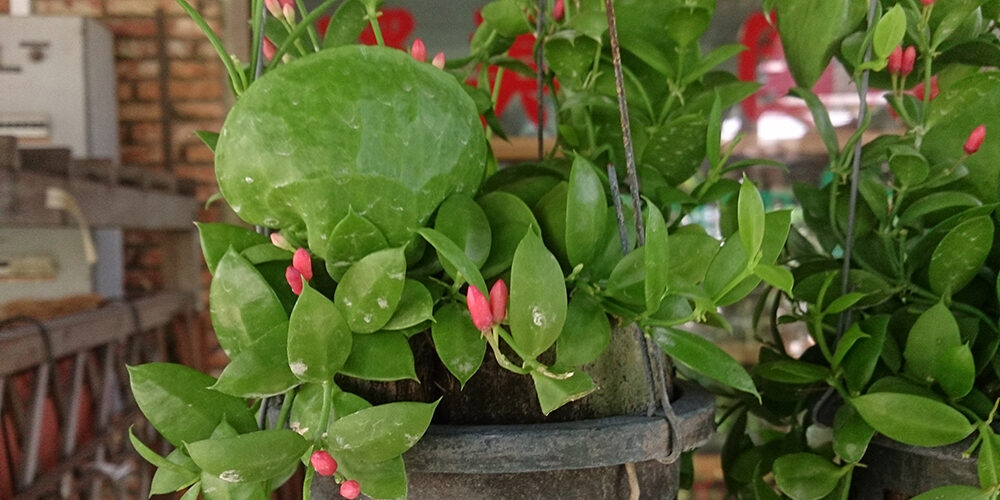Growing Ant Plant

In the wild, Dischidia pectinoides has struck a deal with ants: Pollinate me and I’ll give you shelter. Fortunately, this room-and-board arrangement stops at the doorstep. The Ant Plant is the perfect bathroom dweller. It loves a bit of filtered light and humidity and doesn’t need soil—it’s an epiphyte. The Ant Plant hails from a family of eccentrics: climbers and vines with pocket leaves. It’s cousin is milkweed.
Ant plants are best as houseplants. They are particular when it comes to heat, watering and soil so it’s best to understand the particulars before bringing one home or growing.
Heat, Humidity, and Sun
Ant plants prefer warm and humid tempuratures where temperatures need to be higher than 60 degrees. Although preferring a warm environment, ant plants should not get direct sunlight, making them ideal indoor house plants. The combination of warmth without direct sunlight make them great plants to place in the bathroom.
Watering Tips
Moist soil is preferred by the ant plant but overwatering is a big no-no. Drainage is key to growing and maintaining a healthy and happy ant plant. Ant plants can sustain dry soil more than it can handle saturated soil.
Soil Preferences
Because ant plants prefer damp soil but can’t handle overwatering, the key is to have soil that offers proper drainage that doesn’t allow for water to collect. As Ant plants are best indoors, continuous fertilizing and checking of soil is key to maintain an ant plant
Nicknamed the ant plant,”Dischidia pectinoides is a curious little specimen that belongs to the same family as milkweed. It is a family of oddballs: climbers and vines with swollen-pocket leaves that resemble ravioli. These pods are called bullate leaves. Their insides can be hollow (not filled with ricotta and spinach) or in the case of some milkweeds, holding sticky, milk-colored fluid. Dischidia pectinoides has leaves with hollow interiors. In its native jungles and rain forests, the leaves are home to ant colonies that help pollinate the plant in exchange for, well, room and board.
But never fear. Though Dischidia pectinoides is a veritable bed and breakfast for bugs in the wild, as an indoor plant, it will not roll out the welcome mat to pests. In fact, for a loyal and low-maintenance bathroom decoration, there is no better choice than the Dischidia pectinoides. Ant plant is an epiphyte, which means it only needs sunlight, air, and a bit of water to survive. Requiring no soil, it thrives in a terrarium or in a shell.
With its moisture and steam, a bathroom reminds the Dischidia pectinoides of its home in the rain forest. This houseplant is so lavatory-loving that it is content to bloom there for years and years, spicing up your loo with tiny red buds. Every time you take a shower, don’t forget you’re also feeding your Dischidia pectinoides its lunch.
Planting
- In the wild, it attracts ants that live symbiotically with the plant, exchanging food for pollination (but this won’t happen in your house).
- A flowering climbing vine, it has small red flowers.
- A good companion for other moisture-loving terrarium plants (such as ferns and moss)
Care
- Do not pot an ant plant in soil; it is an epiphyte, which means it lives on air.
- Needs filtered sunlight indoors.
- Likes humid spots but only needs occasional watering.
- Tiny varieties are suited for small indoor spaces, though there are larger options.
- Will bloom any time of year if happy.
Website: www.gardenista.com